The history of knitting is fascinating! Discover knitting history and culture now.
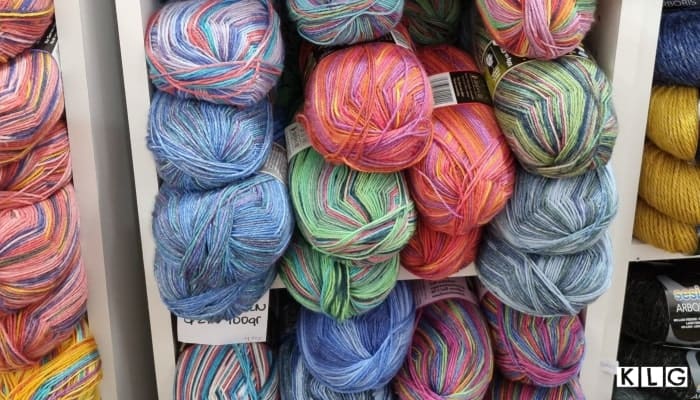
Table Of Contents
- Origins of Knitting
- Knitting in Europe Takes off
- The Industrial Revolution
- 1920s
- The Great Depression
- WW2
- 50s & 60s
- 1980s and 90s
- 21st Century
- Loom Knitting History
- History of Knitting Machines
- Irish Knitting
- Fair Isle Knitting
- Norwegian Knitting
The History Of Knitting
Wondering who invented knitting? The origins are hard to place.

Most recorded works shows it has Middle East origins, spreading to other countries via trade routes. People favored the elaborate Arabic-influenced knitting styles.
Origin in Arabic areas are traced back to anglers, who used the technique to create nets. Many nomadic tribes also tended flocks of sheep, and they supplied the yarn for knitting practical items like socks, caps, and robes.[5]
The oldest known knitted object and pieces come from Egypt – socks from the 11th century CE. These socks use the purl stitch and detailed colorwork, and they were made from cotton hand-dyed with plants and berries.[6]
In the same tomb, the socks were found, other fragments were present. A similar technique is called Nålbinding. Knitting uses two knitting needles to create loops, and nålbinding uses one to loop, knot and split the fabric, like sewing.
However, they create an identical fabric! Nålbinding was a favored technique until knitting was introduced to Europe, where it fizzled out. For more on the history of this ancient technique, watch this short, informative video by Ylva the Red.
It’s said purl stitches were created before knit stitches.
Other socks from a similar time period were found in Western Asia, and they also had intricate geometric colorwork, including the early Arabic word for Allah.[6] Also more fragments were found in the ancient city of Dura-Europos in what’s now modern day Syria, estimated to be from before 256 CE.
This video by We Are Knitters gives an informative introduction.
For a more in-depth dive into this fascinating topic, watch this excellent lecture by the knitting historian Liz Kristian, hosted by the Gail Borden Public Library.
Knitting In Europe Takes Off
The earliest known knitted items found in Europe were made by Muslims employed by the Spanish Christian Royal Families in the 13th century AD. The craft of knitting was probably introduced to the continent by Egyptian Coptic Monks.[5]
Their ability to make high-quality knitted goods like cushion covers and gloves is visible in tombs in a Monastery in Spain. Like Prince Fernando, with beautiful, intricate cushion covers.
The Catholic Spanish found these items extraordinary. Garments and accessories are in catholic church treasuries across Spain. The textiles skills Muslim crafters from the Middle East brought to Spain influenced Christianity.
Usually brought through trade routes to the Mediterranean, and further trade routes reaching Spain and the UK. Many paintings of the Virgin Mary from the 14th century portray Madonna knitting.
There’s evidence to show knitting was popular in Italy at the same time, as many items from the era survive, but so little is known about Italian knit history![2] However, the Catholic Church often commissioned knitted furnishings for their cathedrals.[5]
When Did Knitting Start In England?
It became popular in Europe in the 14th century. Findings by archaeologists, like tax lists in cities like London, Oslo, Amsterdam, and Newcastle. (1)
They show the exchange and use of knitted goods spread throughout European nations throughout the 14th century. Although the purl stitch is in items from Ancient Egypt, the expertise was lost in Europe.
The word “knit” is documented to the 1520s (the 16th century), deriving from the same words giving us “knot.” The Oxford English Dictionary (and other sources) traces the word “knit” to the early 16th century.
The first examples with the purl stitch in other places appeared in the mid-16th century.
Egyptian knitting only had flat knitting. However, flat knitting in Europe was inspired by framework knitting. During the reign of Queen Elizabeth I, the demand for stockings increased, but her father Henry VIII was the first royal to wear them. His son, and Elizabeth’s younger brother, Edward, would be gifted many pairs.[6]
She was a great fan of knitted silk stockings, as the fabric was soft. Knitting schools were created to provide income for the poor. This skill became necessary for the lower classes. They knitted coarse hose from wool with large needles for themselves, and fine stockings with tiny metal needles for the aristocracy.[6]
The renaissance in Europe was a time of experimentation and great expertise in knitting, and that shows in the stockings gifted to many royals at the time. According to estimates by historians, at the end of the 16th century, around 20 thousand people were knitting socks every year![6]
The first known printed knitting pattern written in English, published in 1655, was an instruction manual on how to make a pair of hose.[6]
In the early days of the American colonies, almost all knitting was done with local sheep’s wool and hand knitting techniques, as the British had outlawed the export of wool and knitting frames.[6]
In what was to be the United States, the wife of George Washington, Martha Washington, was a keen knitter and boosted the craft industry. During the war of Independence, she was a rallying force for the effort to supply soldiers with clothes.
Many years later, during the American Civil War, scores of women on both sides organized to provide knitted socks for the soldiers. Though they could’ve had machine knitted ones, they preferred the handmade ones as they were warmer.

Knitting Guilds in Europe
The first was set up during the Middle Ages and for men. Men’s knitting guilds timelines cover the 1200s-1700s, declining in the mid-16th century.
If young men wanted to work in a guild and become a Master Knitter, they spent six years in training. Women couldn’t be members unless their husband, previously a member, had passed away.[5]
The young men spent three years spent as a trainee and three traveling to countries searching for new techniques and patterns. It seems like the dream life. Provided it was in our century. 🙂 Middle-age guilds weren’t a walk in the park. Working environments wouldn’t have included central heating or cooling!
After finishing six years of study, the apprentice would return home and undergo an exam to gain entrance. The test was making a felted cap, a pair of stockings or gloves, a garment, a shirt or waistcoat, and a knitted carpet!
Apprentices had 13 weeks to finish the exam. They were judged on their mastery, artistry, and good taste. Once they passed the test, they became full members. Most of their customers were royalty or members of the royal courts, as those people were the only ones who could afford the prices.[5]
At the beginning of Queen Elizabeth I’s reign, the knitting industry in Jersey & Guernsey was non-existent, and most of the men in those areas made their money through smuggling. She introduced knitting guilds there to supply the English courts with fine garments, and give the men another choice for a profession.[5]
The Industrial Revolution
The mechanical knitting machine or the stocking frame was created in 1589. The English city of Nottingham was a big producer of machine knitted lace during the Industrial Revolution.
The city’s profits grew with the invention of portable circular knitting machines. During the American Civil War, knitting kept their soldiers warm and protected. Unfortunately for scholars interested in this era, it isn’t well documented.(3)
Knitted stockings were in high demand during the civil war. Halfway through the Nineteenth century, most of the knitwear industry hadn’t transitioned to factory machines.
With the improvement of steam-powered machines, machine knitting moved to factories to accommodate larger devices. Machine knitting during the industrial revolution created many fabrics.
This led to the development of machine knitted knitwear on a massive scale, and hand knit fabric fizzed out. Hand knitting in the industry declined. Many hand knitters were put out of business, but it got popular as a hobby.
In the Victorian era, like drawing and learning an instrument, hand-knitting became a desirable pastime for a well-educated high society lady.[5]

The 1920’s: The Roaring Twenties Fashion!
The Roaring Twenties saw a massive increase in the popularity of knitwear in the western world. Knitwear, like pullovers, became a fundamental part of fashion for men, women, and children.
Knitted garments were associated with sports/leisure. High fashion also favored knitted products. Coco Chanel & The Vogue Mag included patterns in their issues.
The 1920s also witnessed a growth in the popularity of this craft. WW1 and the trenches caused a shortage of socks and other items for the armed forces. In the late 20s, knitted sweaters became fashionable, and Cleveland in Ohio was the largest manufacturer in the USA of those items.[4]
Ohio Knitting Mills was one of the oldest and longest-running knitting mills in the country, being founded in 1927 and closed down in 2004.
This lead to governments encouraging those on “The Home Front” to reuse old knitted items and spare wool for knitted clothes for the troops. Companies and wool shops profited from the demands, and needles, patterns, and yarn abounded.
Meanwhile, the losing side of the Russian Civil War escaped to China. They encountered Chinese caravan men, and the Russians passed on the craft of knitting. These caravan men made items and created fabric out of camel hair!
The Great Depression
The prominence of knitwear in the fashion of the ’20s continued. The fashionable clothing range changed. Innovations became common with the invention of the zip and new synthetic yarn.
The hardship suffered by many during the Great Depression made people return to making clothes by hand. It was cheaper. Knitting was essential, as socks, underwear, and others needed constant repair.
Patterns were featured in women’s magazines, reflecting the need for hand-knitting. People took a part-time job, handcrafting for profit.
A Little Bit Of History On Vintage Needles
In the past materials such as tortoiseshell, ivory, and walrus tusks were used in the production of knitting needles or knitting pins.
The use of these materials is now banned due to the protection of endangered species. You can find imitation or faux Tortoiseshell vintage needles, they are made of celluloid.
Other materials used in the early 1900s were wood, metal (nickel-plated steel), celluloid (xylonite), casein (made from milk protein) which were often colored, bakelite, and bone.
The process of making bone needles was a smelly and dirty job. Metal needles were prone to rust and are fine in diameter. Lace knitting was very popular.
In the 1930s the circular needle became popular due to the ability to do flat and circular knitting. Usually with a metal needle tip and flexible plastic cable.
WW2: Britain Knits For Victory!
During World War II (WW2), the British Ministry of Information published a handout – Make, Do, and Mend. In this pamphlet, the government department offered information on
- Saving money
- Being thrifty
- Using rationed items and supplies
- Contributing to the war effort
Wool was limited in the second world war. The booklet encouraged people to unpick old woolen garments to re-use. Patterns were issued so men and women could make these for the army and navy and show their support.
- Balaclavas
- Gloves
- Hats
It gave people back at home a sense of purpose and a chance to contribute to the war effort of the second world war. Propaganda often depicted a woman knitting, with posters exclaiming the importance of helping the soldiers.
It wasn’t just women at home who knitted. In WW2, over 1,300 people (almost all women) were employed in the Cleveland plant of Stone Knitting Mills. Over the six-year-long war period, that mill produced over 2 million sweaters for the troops![4]
In Germany, however, in both world wars, wool was a hard-to-come by material, and what could be used was reserved for essential manufacturing. If German women did knit, they unpicked and reused old garments.[6]
In the late 1940s, desperate for a more optimistic future at the end of the war, the American fashion industry focused more on bright colors, stylish cuts, and sportswear, which knitwear changed to reflect as well.[4]
Jane Waller wrote an essay ‘Knitting Fashions Of The 1940s Styles Patterns and History’. It’s worth reading if this period interests you. Or, watch this great documentary of wartime knits by Shannon Makes on YouTube.
The 50’s & The 60’s: Haute Couture Garments
After the war years, nations recovered from the terrible losses they’d suffered. British bred specific sheep to produce high-quality yarn.
New colors and yarn types were introduced. Thousands of patterns fed the market, hungry for designs in bright colors.
Kids learned to knit in schools. It was a useful skill to have. Magazines had good ideas and patterns for clothing, blankets, toys, bags, curtains, and other items. People made things to sell for a profit.
As argyle sweaters became popular, an equal demand for argyle socks appeared, and women’s magazines featured dozens of patterns.[6]
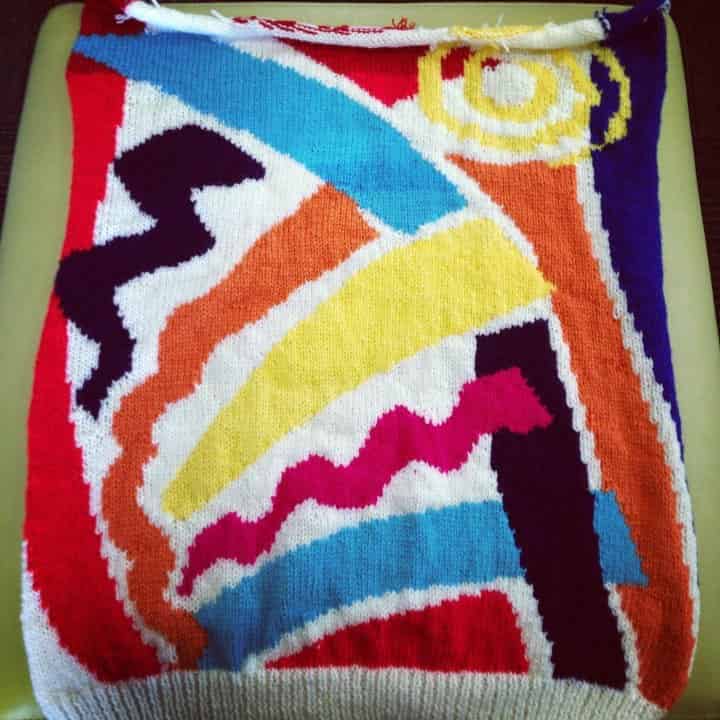
1980s and 90s – The Craft Experiences Decline
The popularity suffered a sharp decline during this period. Sales of patterns and yarn collapsed, as the craft was thought of as old-fashioned. Kids weren’t taught in schools. It was a difficult time for the industry.
The availability and low cost of machine-knitted items from commercial companies made it practical and less expensive. People’s attitudes to hand knits changed and it was seen as “uncool”.
Tracksuits and sweatshirts were used as sportswear, not knitwear, as was in the 1920s. Knitwear became smart casual than more relaxed attire. Advances in technology saw digital versions of knitting machines.
21st Century: A comeback!
In the 21st century, knitting has seen a revival. Hooray! This revival is from the growth of the internet, The “Handmade Revolution,” and interest in DIY Crafts.
The Handmade Revolution is the name given to movements online, focusing on bringing back handcrafts. Often facilitated on forums and Pinterest.
Natural fibers became more accessible and cheaper: alpaca, angora, merino, mohair, qiviut, silk, and yak. Also, plant fibers like cotton, bamboo, and hemp.
The yarn industry makes “Novelty Yarns,” using natural and synthetic fibers. The knitting community adapts and blends this wonderful skill. Creating unique trends like arm knitting!
New ideas are forever influenced by the past. The Victoria and Albert Museum has a large exhibit on textiles and knitting. It was interesting! Hand Knitwear designers have experienced more exposure via the digital age and social media.
Ravelry is a platform for knitters to learn from each other and for people to showcase and sell their patterns. Jess and Casey, the founders, created a thriving and passionate community.
Savvy people have used platforms like Instagram and Facebook to create a loyal following. Influencers attract serious popularity.
During the COVID-19 pandemic, knitting experienced a significant resurgence in popularity. Many people turned to this craft as a way to cope with stress. Online knitting communities flourished, offering virtual support and connection.
Loom Knitting History
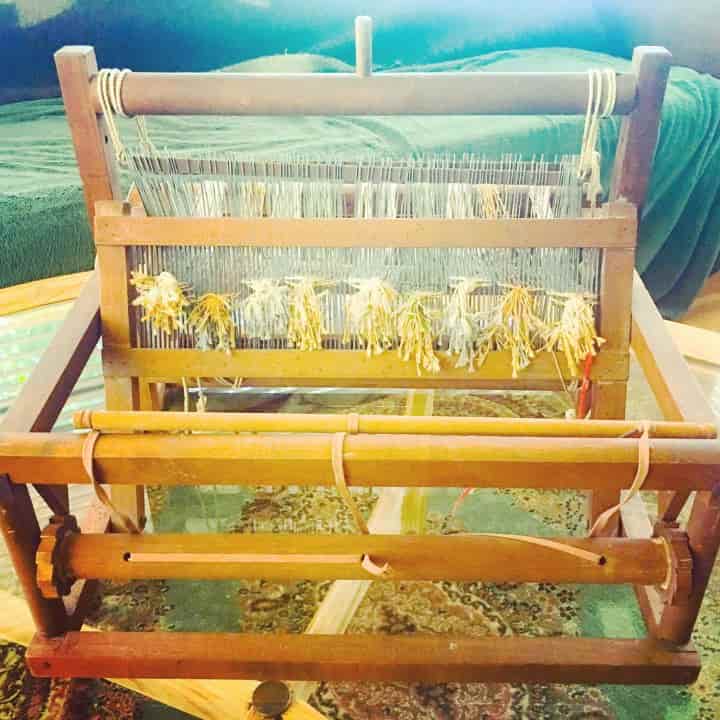
In the history of loom knitting article by Loom Knitting Help, here is what they said. “Looms used during the Medieval period in France, Britain, Germany, and other European places to knit tasseled caps, shawls, petticoats, blankets, stockings, carryalls, purses, sacks, nets, hammocks, and curtains.” Find out more here.
Knitting Machines History
Who invented the first knitting machine? William Lee developed a frame with a circular form using a spring and barbed needle in 1589. The machine William Lee made have needles on a bed of iron and encased in a large wooden structure.
The needle bed held horizontal, and other parts of the machine worked around this. It relied on manual labor to operate. Still, it was much quicker! It was based on the method of framework knitting, a method of hand knitting on a loom.
Queen Elizabeth I didn’t grant him a patent because she was worried about taking jobs from the poor, who relied on the craft for their income. It wasn’t until the Industrial Revolution that an improved version of his machine was used.[5]
Nowadays, knitting machines run on electricity and do most of the work.
- The Brother knitting machine timeline spans from 1954 to the present.
- The Raschel knitting machine dates back to the 19th century. It was usually used to make knitted sweaters.[4]
For more, read this article, “A Short History Of The Knitting Machine, or watch the overview below.
Pin Now to Save for Later

Irish Knit History
Irish knitting industry is synonymous with Aran knitting and sweaters. The history in Ireland encompasses the intricate patterns created on the Aran Islands. Jumper patterns were guarded and kept within the same clan for generations.
Here’s more on the topic in this video by Melissa Weaver Dunning hosted by the Loudoun County Public Library.
Fair Isle Knit History
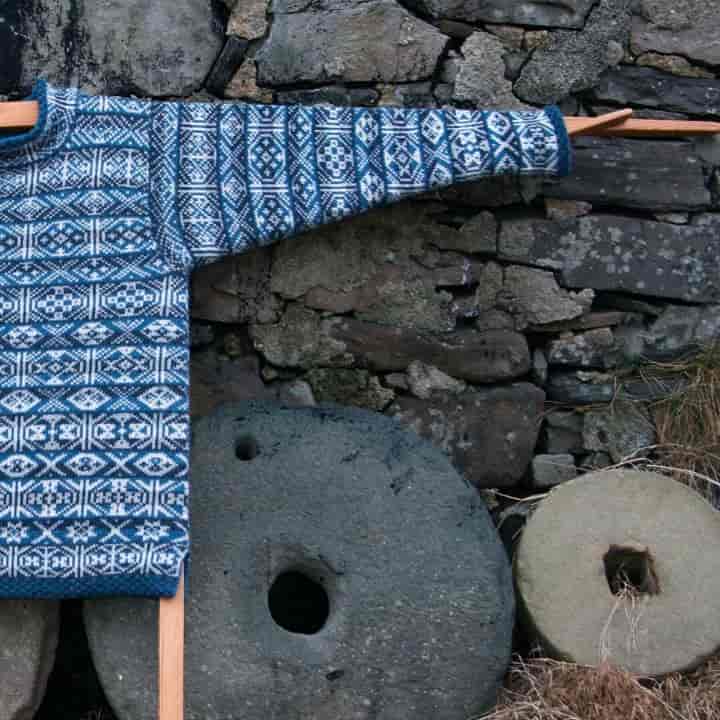
Fair Isle knitting originated on the remote island of Fair Isle, one of the Shetland Islands in Scotland. The intricate patterns are famous around the world.
This distinctive style of colorwork knitting likely developed in the early 19th century, though its exact origins are unclear.
Fair Isle designs are complicated and colorful. The traditional motifs have a long past, and each knitter had their interpretation.
Inspiration for designs and colorwork was found in the Isle’s wild beauty and the lives local people led. Sailors and fishers wore predominantly handmade jumpers. For more on this, read this article by Exclusively Fair Isle.
Today, Fair Isle knitting has spread globally, inspiring countless variations while retaining its connection to Shetland’s textile heritage. Modern knitters continue to explore and expand upon this rich tradition.
Norwegian Knit History
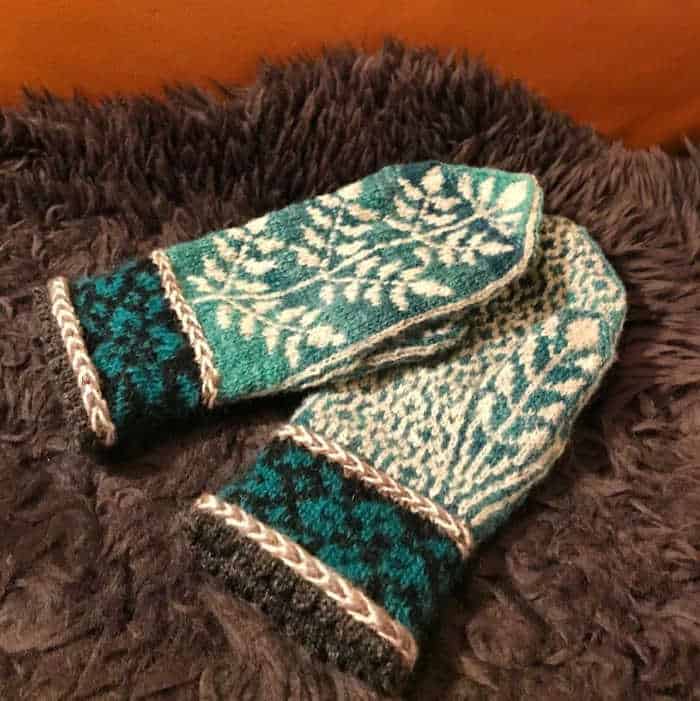
For more great pics, see @marianneskatten on Instagram.
In graves dated back to the 15th century, knitting remains were found, like garments. According to customs records, Bergen in Norway was a harbor for importing luxury embroidered and knitted items.
Historical accounts have noted it was an activity associated with the lower/poorer classes. By the end of the 16th century, many people studied knitting to have a useful skill to create income. Handknitted Norwegian mitten designs are famous.
Popular Books
Here are excellent titles worth reading.
Conclusion
Next time you sit down to knit, think of the old days of this wonderful hobby. I’d love to hear anything you know about this. Tell me in the comments section.
Want to read more about this hobby? See the benefits of knitting and why being a lifelong knitter is a wonderful idea here.
References
- Turnau, Irena. “The history of peasant knitting in Europe: a framework for research.” Textile history 17, no. 2 (1986): 167-179.
- Nargi, Lela. Knitting around the world. Voyageur Press (MN), 2011.
- Strawn, Susan M. “Knitting as scholarship.” (2012).
- Tatar, Steven. 2010. The Ohio Knitting Mills Knitting Book: 26 Patterns Celebrating Four Decades of American Sweater Style. Artisan.
- Knitting. 1984. Octopus Books.
- Magazine, Vogue Knitting. 2007. Vogue Knitting: The Ultimate Sock Book: History, Technique, Design.

have you any KNIPAT knitting patterns from ww11
Deridre
Hi Deidre. Some Etsy stores stock Knitpat patterns. Cheers Jodie
I’m using this article for a school project, do you happen to know when it was published? Also, who was the author? Is it Jodie Morgan or is she just an Editor on knitlike granny?
Thank you so much for your time
Hi Eve. Yes, I’m the author of this post. Cheers Jodie 🙂 Good luck with your project!
Nalbinding does not use a “knitting” needle. The fiber is threaded on a sewing type needle and stitches are worked from the fingers.
Hi Susan, I didn’t come across that information when I was researching. I must have missed it. Thank you for telling me, that’s very interesting! I’ll add it to the post so others can learn from your knowledge. Thanks again. Cheers, Jodie
A minor correction if I may.
You note, “The word knit only became listed in the Oxford Unabridged English Dictionary in the 15th century, despite being present since 1400 AD.”
Nothing was listed in the Oxford English Dictionary in the 15th century, as the OED began publication in 1884. The word “knit” in its current sense is documented to the 1520s (that is, the 16th century), deriving from the same group of words that give us “knot.”
The OED (and other sources) trace the word “knit” back to the early 16th century.
Thanks so much John for taking the time to share this information with me. I appreciate your correction and will adjust my article accordingly. Cheers Jodie